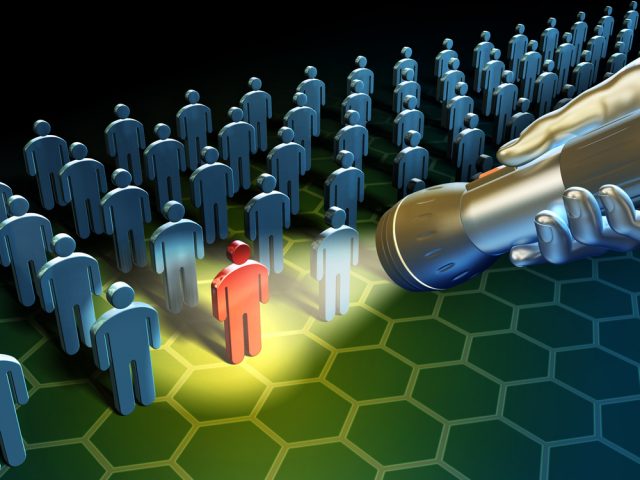Why proactive cybersecurity means focusing on people

Today’s work environment is radically different from that of just 16 months ago. COVID-19 has created a permanent state of hybrid or fully remote work, which, yes, brings a number of benefits, but it also increases employee stress, reduces their attention span, and creates a chasm between them and their internal security team.
We’re living in the new world order, which compounds and amplifies the threats from what have historically been the three most common security incident reasons -- people getting hacked, people making mistakes, and people breaking rules. Not being proactive about potential insider threats almost guarantees an organization that hasn’t been hacked will be doomed to join the many big-name brands that have found themselves having to pay ransom for access to their systems.
Remember, people are an organization's greatest asset, but also its greatest vulnerability, which is why a human layer approach to cybersecurity is so important today.
When it comes to security practices, most organizations fall into one of two camps: prevention, or protection. Prevention is the traditional way most organizations deploy solutions and put up digital walls around the business. But over the past few years, more organizations have chosen a different, protection-first route by proactively securing specific devices, people and data. With mobile employees now the norm rather than the exception, organizations need to use both approaches and focus on both their greatest asset and vulnerability: their own people.
Cybersecurity’s Only Constant: Your Employees
Cybersecurity incidents have always been an issue, but since 2019, ransomware attacks in the U.S. have skyrocketed 158 percent according to SonicWalls’ 2021 report. The main reason for the surge is the number of people actively working online which provides more of an opportunity for cybercriminals to target insiders within an organization. Additionally, 70 to 90 percent of cyberattacks are the result of a bad actor pretending to be someone they are not and leading an employee into doing something they shouldn’t do. The latest Verizon Data Breach Investigations Report also notes that 94 percent of malware is delivered via email.
While there are so many variables in a cybersecurity incident, there is still just one constant: a company’s own employees -- not the people outside of an organization, but those within it. That’s why IT needs to focus on a mix of prevention and protection.
Let’s look at the evolution of cybersecurity. Initially the focus was paid on the network layer. The focus was to keep everything within your ecosystem secure by not letting anything or anyone in. As digital transformation took hold, there were too many barriers to this approach as the time spent waiting for data and information from teams to conduct their jobs was going up. At the same time, the mobile workforce came to be. That was more people in the field, working via mobile devices and needing access from wherever they were. Focus was then turned to the application layer – protecting each business application and securing it independently from the rest of the network and this required employees to have multiple log-ins and passwords in order to access the apps required to conduct their business.
Today, as we move towards a true hybrid workforce that is pressed for time and "real-time" means more than ever, it is time to look at the human layer of cybersecurity. No two employees are the same, so why should a one-size-fits-all security solution be in place? A human layer approach to cybersecurity allows organizations to combine multiple security controls and solutions to implement a robust security strategy.
Empowering Employees Through Human Layer Security
Employees today are faced with a number of digital tools and communication channels. With the rise in cybersecurity incidents, it is normal that some may find themselves hesitant to perform some of their normal tasks due to the risk that they may make that next mistake. This is no way for people to work. In order for people to perform at their highest level, they need to be confident in the processes and tools in place that help them do their jobs more efficiently and effectively -- all while leaving the fear of wrongdoing outside.
We now have the power to leverage many intelligent technologies to operate on a truly zero-trust model and this starts by analyzing the context and content of every inbound email before it is delivered to an employee’s inbox. Advancements made in contextual machine learning and Natural Language Processing (NLP) now allow us to provide that additional layer of security and trust. By determining every sender’s authenticity, detecting when compromised accounts are being used on authenticated domains and when cybercriminals have utilized open-source intelligence (OSINT) to make potential attacks more convincing, we can protect and empower employees to conduct business more freely without the risk of them being hacked by cybercriminals. At the same time, intelligent technology can be used to detect abnormal behavior as employees share data, whether that’s adding the wrong recipient because of Outlook autocomplete or intentionally breaking the rules and exfiltrating data. The right corrective action can then be taken before a security incident occurs.
If organizations truly want their teams to be operating at their highest level, it’s time to remove the insider risk by providing a proactive cybersecurity approach that focuses on people, not networks or applications.
Image Credit: Andrea Danti/Shutterstock

Co-founder of Egress Software Technologies, Tony Pepper currently serves as CEO, overseeing all aspects of the business growth and innovation. Prior to Egress, Tony held executive management positions at Reflex Magnetics, Pointsec Mobile Technologies, and Check Point Software Technologies. A frequent technology and industry speaker, Tony holds a Bachelor of Politics degree, a Software Engineering Master’s and is a certified BCS Fellow. Tony sits on industry committees including Intellect’s Government Management and Defence & Security Groups.
